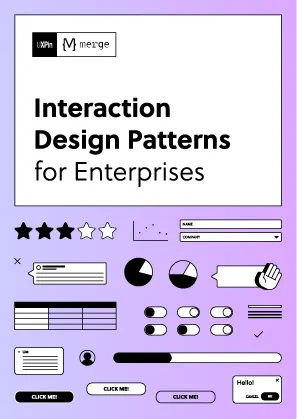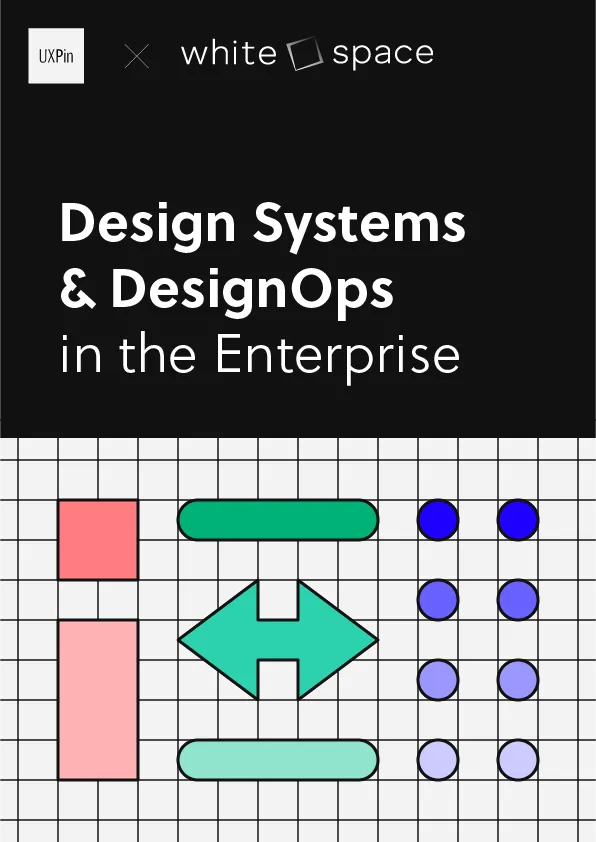In product design, choosing the right prototype fidelity is critical. Low-fidelity prototypes are quick and simple, ideal for brainstorming and early feedback. High-fidelity prototypes are detailed and interactive, perfect for usability testing and stakeholder presentations. Here’s a quick breakdown:
- Low-Fidelity: Basic sketches, wireframes, or clickable mockups. Focuses on structure and functionality. Fast, cheap, but lacks detail.
- High-Fidelity: Polished visuals, realistic interactions, and actual content. Mimics the final product but requires more time and resources.
Table of Contents
Low Fidelity vs. High Fidelity Prototyping – What’s better?

Quick Comparison
| Aspect | Low-Fidelity | High-Fidelity |
|---|---|---|
| Development Time | Quick to create | Time-intensive |
| Cost | Low | High |
| Design Detail | Basic layouts | Pixel-perfect visuals |
| Interactivity | Limited | Fully interactive |
| Testing Focus | Concepts and flows | Usability and specifics |
| Team Involvement | Designers | Designers + Developers |
Use low-fi for early ideas and high-fi for refining details and securing approvals. Choose based on your project’s stage, goals, and resources.
Low-Fidelity Prototypes
Low-fidelity prototypes are basic visual drafts that highlight the main functionality of a design without focusing on its visual polish. They help teams test ideas quickly and at a low cost during the early stages of development.
Key Features and Types
These prototypes rely on simple shapes, placeholder text, and essential UI elements to outline the structure of a design. Common types include:
- Paper Sketches: Hand-drawn wireframes created with pen and paper.
- Digital Wireframes: Simple digital layouts that map out content and structure.
- Clickable Mockups: Basic interactive prototypes with limited functionality.
These tools allow teams to experiment and iterate quickly, though they come with certain limitations, which we’ll explore further.
Strengths and Weaknesses
| Aspect | Strengths | Weaknesses |
|---|---|---|
| Speed | Quick to create and update | Lack of detail for complex interactions |
| Cost | Requires minimal resources | May miss subtle usability issues |
| Feedback | Focuses attention on functionality | Can feel too abstract for some users |
| Flexibility | Easy to make major changes | Hard to evaluate visual design elements |
| Team Input | Accessible for all team members | Doesn’t fully represent the final product |
When to Use Them
Understanding the strengths and limitations of low-fidelity prototypes helps determine the best situations to use them. They’re particularly useful for:
- Early Concept Development: Testing multiple ideas quickly.
- Stakeholder Alignment: Gathering feedback on layout and structure.
- User Flow Testing: Ensuring navigation patterns make sense.
- Requirements Gathering: Identifying essential features during the project’s initial phases.
The success of low-fidelity prototypes lies in their simplicity. Teams should clearly define their goals and ensure stakeholders understand the prototype’s purpose and scope. This avoids confusion about the final product while allowing for quick iterations and effective feedback.
sbb-itb-f6354c6
High-Fidelity Prototypes
High-fidelity prototypes provide a polished, detailed preview of a product, closely resembling its final appearance, behavior, and functionality. They feature advanced visuals, realistic interactions, and actual content, making them ideal for simulating the end product.
Key Features and Examples
High-fidelity prototypes stand out from simpler versions due to their attention to detail and functionality:
- Pixel-perfect visuals: Accurate colors, fonts, spacing, and imagery
- Advanced interactions: Animations, transitions, and dynamic state changes
- Real content: Actual text, images, and data instead of placeholders
- Interactive components: Elements that function as they would in the finished product
These features improve testing accuracy but also demand more resources. Modern tools like UXPin simplify the creation of these detailed prototypes by using code-backed components.
"When I used UXPin Merge, our engineering time was reduced by around 50%. Imagine how much money that saves across an enterprise-level organization with dozens of designers and hundreds of engineers." – Larry Sawyer, Lead UX Designer
Advantages and Challenges
High-fidelity prototypes are excellent for precise user testing and gaining stakeholder approval, thanks to their realistic representation of the final product. However, creating them requires more time and resources, which can slow down the iteration process.
This trade-off highlights how choosing the right prototype type can influence the overall design workflow.
Ideal Scenarios and Timing
Despite these challenges, high-fidelity prototypes are indispensable when validating detailed user experiences. They are especially useful during the final testing phase, where every aspect of the user journey needs to be evaluated, or during presentations to secure approval from stakeholders.
Low-Fi vs. High-Fi Comparison
Main Differences
Low-fidelity and high-fidelity prototypes vary in several key areas, including time, cost, design complexity, interactivity, and team involvement. Here’s a breakdown:
| Aspect | Low-Fidelity | High-Fidelity |
|---|---|---|
| Development Time | Quick to create in early stages | Takes longer to achieve a polished look |
| Cost | Requires minimal investment | Demands a larger budget |
| Design Detail | Simple wireframes and basic layouts | Highly detailed and visually refined |
| Interaction Level | Limited or no interactivity | Fully interactive elements |
| Content | Placeholder text and images | Final, production-ready content |
| Team Involvement | Primarily designers | Includes designers, developers, and stakeholders |
| Testing Focus | Focuses on early concepts and flow | Emphasizes usability and detailed testing |
| Iteration Speed | Fast and frequent changes | Slower but more deliberate adjustments |
Selection Guidelines
Choosing between low-fi and high-fi prototypes depends on your project’s stage and priorities. Here’s how to decide:
- Project Timeline: Low-fi works best early on when you need quick iterations. High-fi is better for later stages when details matter.
- Resources on Hand: High-fi prototypes often require advanced tools and specialized skills, while low-fi can be done with basic resources.
- Stakeholder Needs: If you’re presenting to clients or executives, a polished high-fi prototype might be necessary.
- Testing Goals: For testing detailed interactions or complex workflows, high-fi is essential. Low-fi is more suited for testing general ideas and user flows.
Effects on Project Flow
The choice between low- and high-fidelity prototypes can directly affect how efficiently your team works and how feedback is gathered. For example:
"What used to take days to gather feedback now takes hours. Add in the time we’ve saved from not emailing back-and-forth and manually redlining, and we’ve probably shaved months off timelines."
Similarly, high-fidelity prototyping can streamline complex workflows, as demonstrated by AAA Digital & Creative Services:
"As a full stack design team, UXPin Merge is our primary tool when designing user experiences. We have fully integrated our custom-built React Design System and can design with our coded components. It has increased our productivity, quality, and consistency, streamlining our testing of layouts and the developer handoff process."
These examples show how the right prototype fidelity can improve collaboration and speed up project timelines, ultimately driving better outcomes.
Prototyping Tools
Choosing the right tool can greatly impact how efficiently you move from a concept to a detailed design. The best tools support various levels of detail, adapting to different stages of the design process.
Low-Fidelity Software
When working on low-fidelity prototypes, speed and simplicity are crucial. These tools help designers quickly bring ideas to life without getting bogged down in details.
| Tool | Key Features | Ideal For |
|---|---|---|
| Balsamiq | Wireframing with sketch-like visuals | Quick concept validation |
| Miro | Collaborative whiteboarding and basic wireframes | Team brainstorming |
| Whimsical | Flowcharts and wireframes | Early-stage planning |
| Sketch | Vector-based wireframing | Mac users, UI basics |
Once low-fidelity concepts are solidified, it’s time to consider tools for more detailed, interactive designs.
High-Fidelity Software
High-fidelity tools allow designers to create polished, interactive prototypes that closely mimic the final product. One standout in this category is UXPin, which excels in handling complex projects with features like advanced interactions and code integration.
Larry Sawyer, Lead UX Designer, shared his experience:
"When I used UXPin Merge, our engineering time was reduced by around 50%. Imagine how much money that saves across an enterprise-level organization with dozens of designers and hundreds of engineers."
Transitioning from Low to High Fidelity
Modern design systems make it easier to move from low-fi to high-fi prototypes. By using code-backed components, designers can maintain consistency throughout the process, avoiding the need to recreate work at each stage.
Brian Demchak, Sr. UX Designer at AAA Digital & Creative Services, explained their approach:
"As a full stack design team, UXPin Merge is our primary tool when designing user experiences. We have fully integrated our custom-built React Design System and can design with our coded components. It has increased our productivity, quality, and consistency, streamlining our testing of layouts and the developer handoff process."
To ensure smooth transitions between fidelity levels, keep these points in mind:
- Use a component library that scales with your needs.
- Stick to consistent naming conventions.
- Choose tools that work seamlessly across fidelity levels.
- Add details systematically and in phases.
Summary
Key Points Review
Picking the right level of fidelity is key to project success and team productivity. High-fidelity prototypes are ideal for later stages when detailed interactions and polished visuals are needed, while low-fidelity prototypes are perfect for early brainstorming and quick iterations.
Here’s how fidelity choice affects different project aspects:
| Project Aspect | Low-Fidelity Impact | High-Fidelity Impact |
|---|---|---|
| Development Time | Speeds up early iterations | Cuts down engineering time significantly |
| Team Communication | Enables quick feedback cycles | Provides clear, detailed specs for devs |
| Resource Investment | Keeps initial costs low | Requires more resources but offers precision |
| Stakeholder Alignment | Validates early concepts | Secures approval for detailed designs |
These considerations are essential when deciding on the right prototyping tool.
Tool Selection Tips
Look for tools that make it easy to switch between fidelity levels. Design Leader David Snodgrass emphasizes the value of advanced interaction features:
"Been a fan. The deeper interactions, the removal of artboard clutter creates a better focus on interaction rather than single screen visual interaction, a real and true UX platform that also eliminates so many handoff headaches."
Key factors to consider when choosing a tool:
- Component Libraries: Tools with built-in libraries or Git integration save time.
- Advanced Interactions: Features like variables and conditional logic for dynamic designs.
- Team Collaboration: Tools that simplify communication between designers and developers.
- Code Integration: Options for generating production-ready code.
For example, AAA Digital & Creative Services saw a boost in productivity and quality by using code-backed components, which streamlined their workflow and ensured consistency across their projects.

